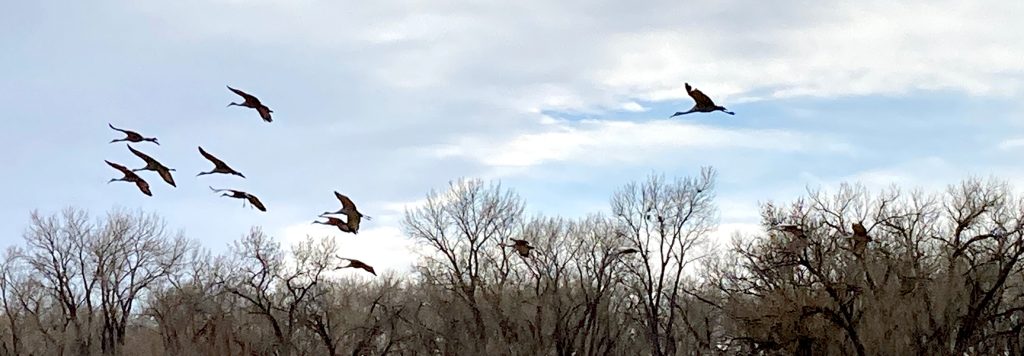
A Bird’s View of Aerodynamics
Those living in the mid Rio Grande flyway await the honking of Snow Geese and the gurgle of Sandhill Cranes as they begin arriving in October. We look up to see them flying in their familiar V formation. But how does that V formation come about?
The farthest out wing feathers of the lead bird generates air movement on the wing’s down beat, which then spirals backward. Number two bird, flying diagonally and slightly higher, catches an uplift from this. Their downward wing flap then sets up the same dynamics for the bird diagonally behind them, and so on. The birds behind the lead bird don’t have to use as much energy this way. When the lead bird tires, they drop back and another takes their place, and the lifting power of the V formation continues.
It is thought that the continuous honking of the geese and the gurgling noise of the cranes keep them from hitting each other and also encourages the lead bird.

